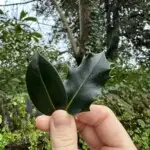
If you have a holly bush or tree, then you’ve probably noticed the leaves tend to be, for lack of a better word, “stabbier” toward the bottom of the tree. But the leaves are less spiky as you go further up the tree. Some are even rounded, lacking the characteristic shape holly is known for.
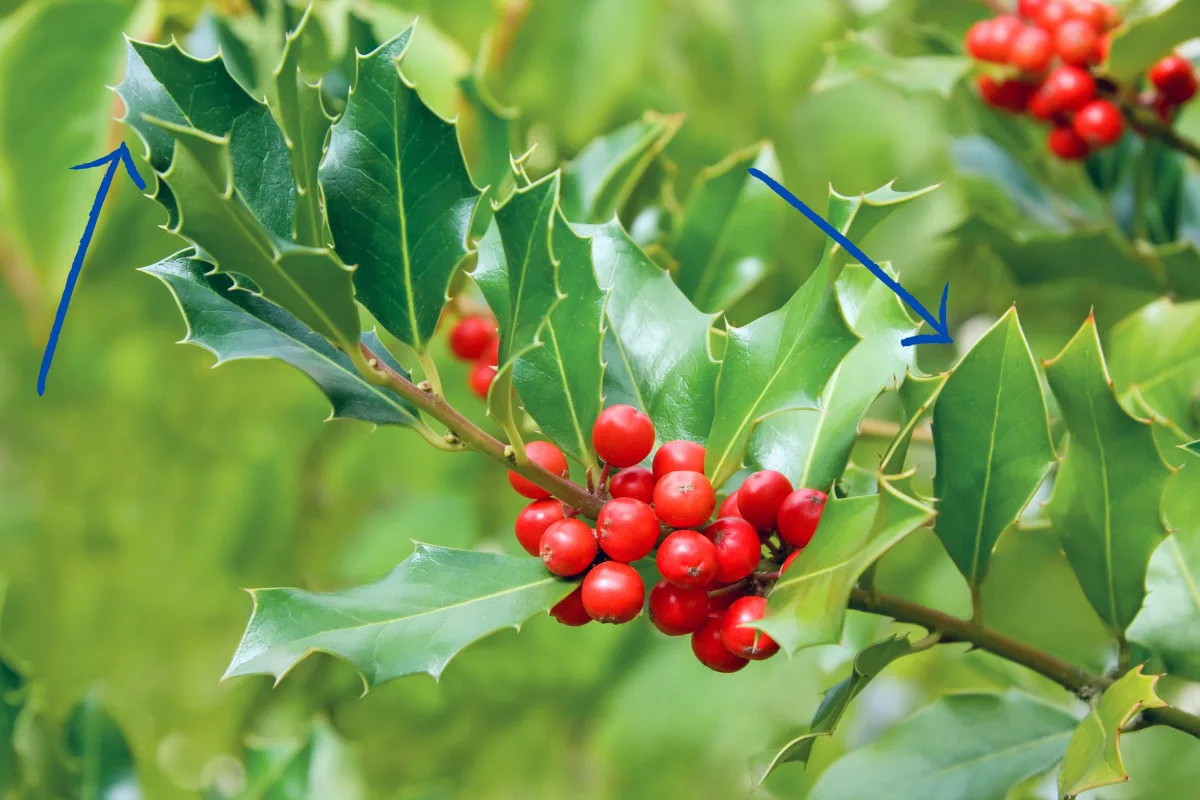
What on earth causes this? The answer is pretty cool.
‘Tis the season for holly!
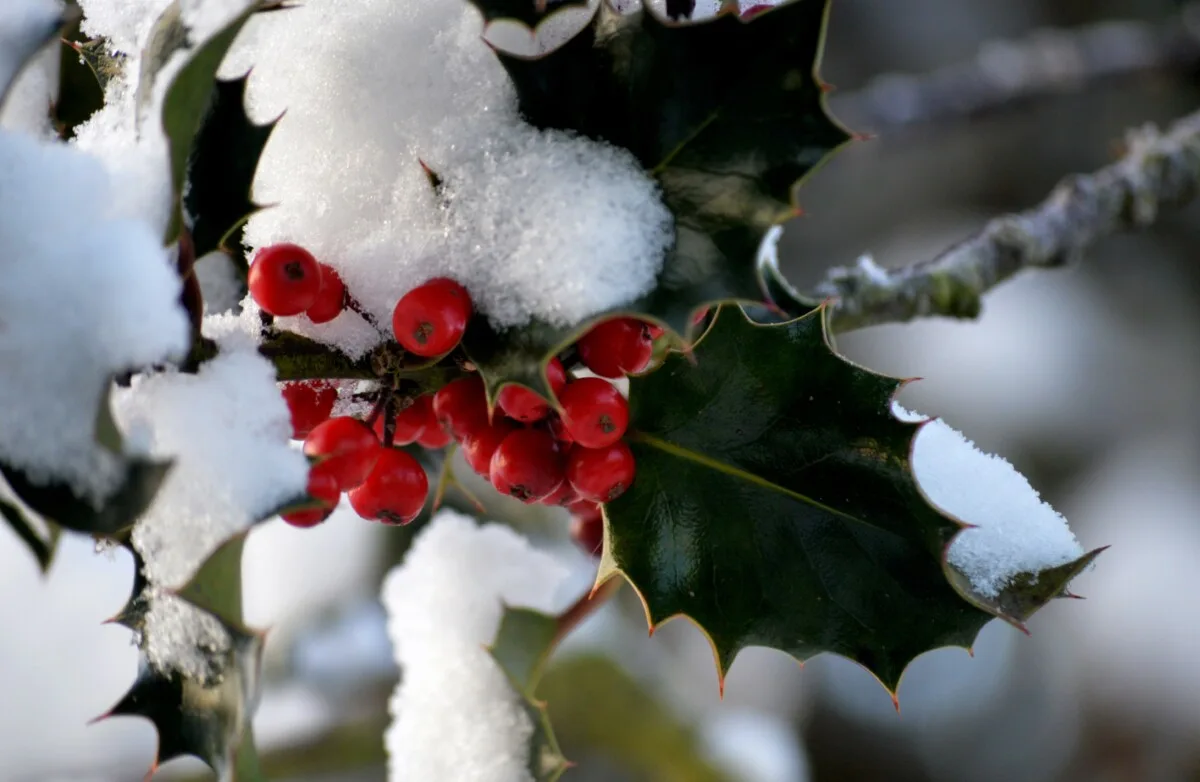
This spiky evergreen has been a part of Christmas celebrations long before there was a Christmas to celebrate. For pre-Christian peoples, notably the Pagans, holly was a central part of celebrating the winter solstice and yule.
The pagans considered holly to be a sacred plant because it remained evergreen throughout winter. They would cut holly sprigs and branches and bring them into their homes to celebrate the Winter Solstice. This was an important reminder that winter’s cold, dark nights would not last forever and that green, warmer days would return.
Not to be outdone, the Romans put sprigs of holly on top of gifts they would give one another during their celebration of Saturnalia – another pre-Christian winter solstice festival celebrating the return of the light.
But we want to talk about holly’s super cool hidden talent, so we’ll leave tradition in the past and fast forward to 2012.
Chew on that, Deer!
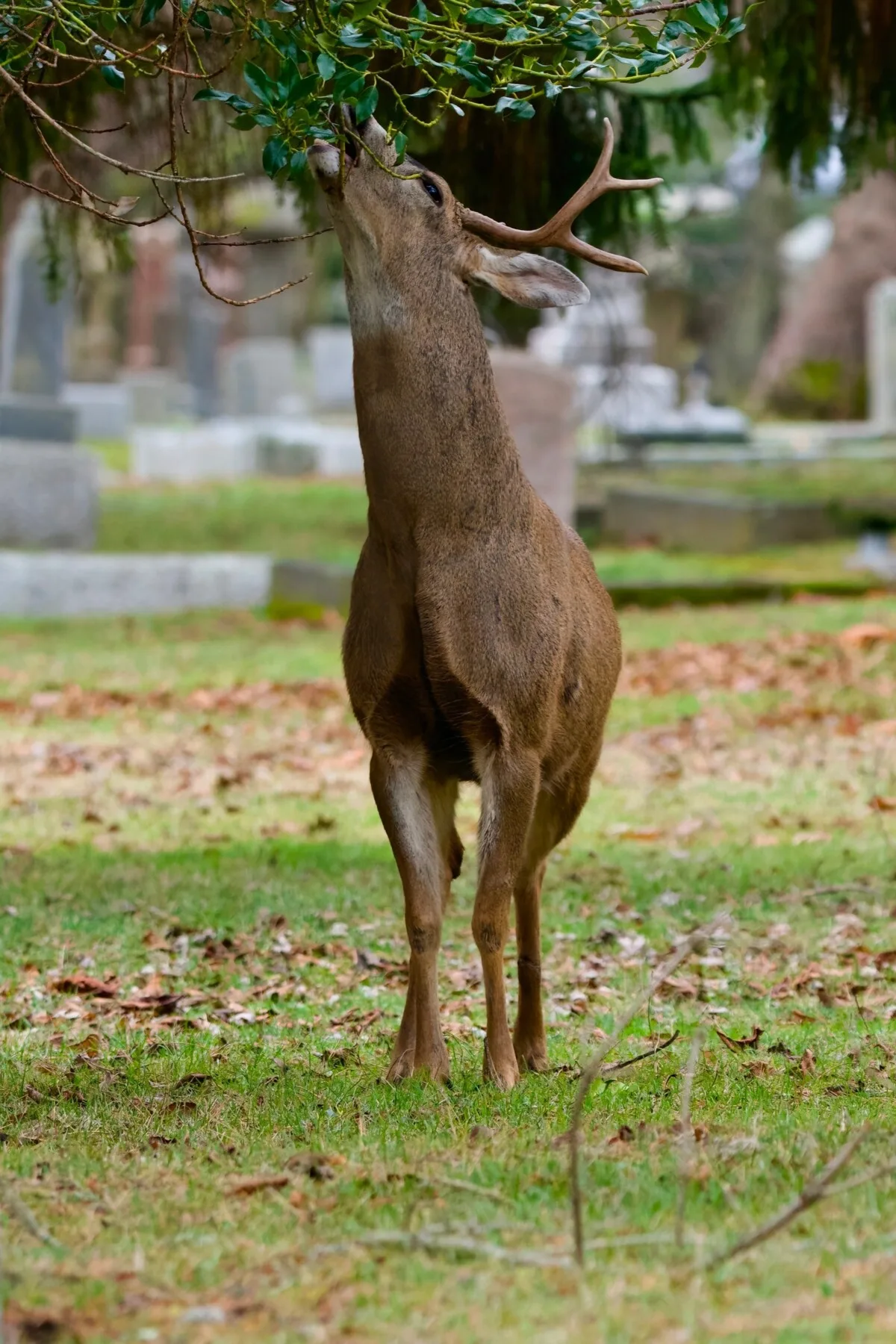
In December of 2012, a pair of scientists in Spain wanted to know if incredibly sharp spikes on some leaves and few to no spikes on others – all on the same tree — were due to the plant changing its genetic structure. It’s been known for ages that holly (and other plants) can adapt to the presence of nibbling herbivores by growing more prickly leaves, but it’s never been studied on this level.
The scientists were able to prove that holly plants can change the DNA in specific leaves, without changing the genetic makeup of the rest of the plant, in response to environmental stressors – deer eating the leaves on the lower branches.
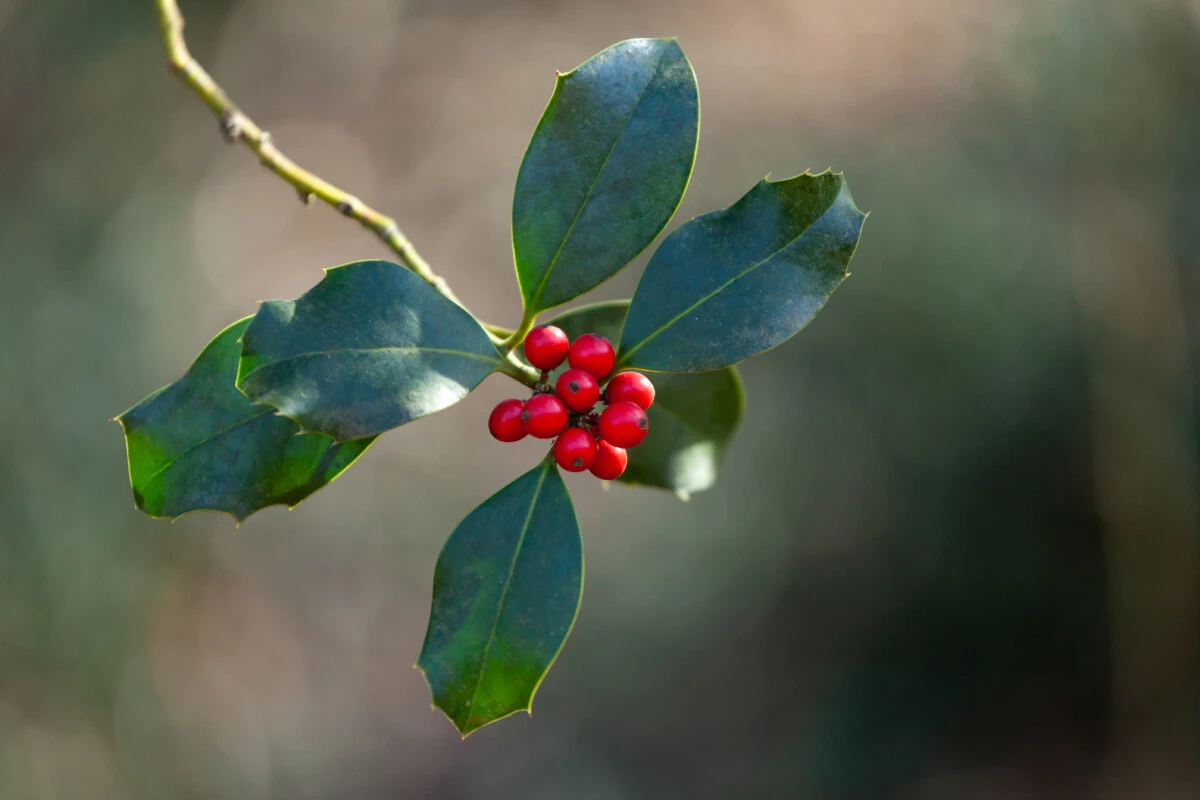
This process, a plant’s ability to change leaves within the same organism is called heterophylly.
Beyond answering a question definitively, this also paints a more hopeful picture for plants as we continue to deal with climate change – their ability to quickly adapt to changes in their environment.
Is Your Holly Extra Spiky?

If you have a larger holly, take a closer look at the leaves higher up the tree (out of reach of nibbling animals), and you may be surprised to find few spikes on the leaves.
If you notice super-pointy spines on your holly but don’t have many critters in your yard, it could be your pruning practices.
My sweetie’s mom cuts fresh holly sprigs every year to decorate with, and the leaves on her holly tree are like tiny hypodermic needles. Ouch!
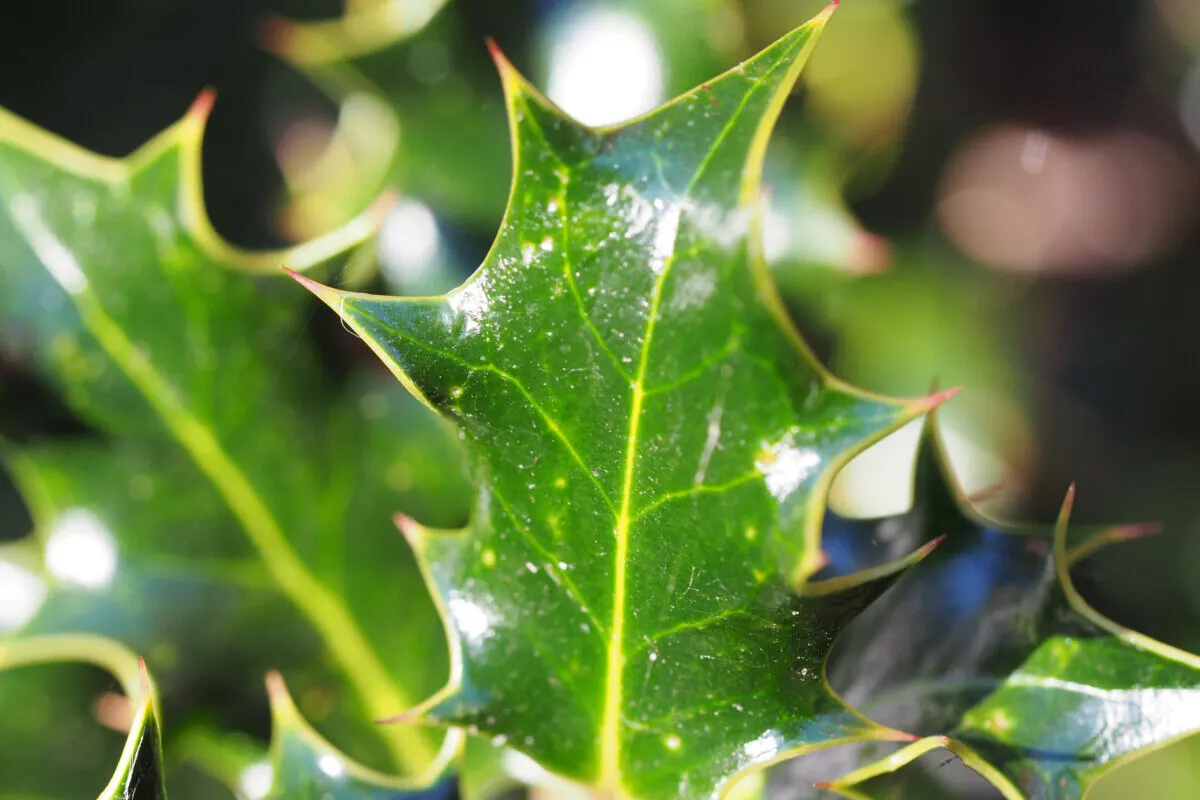
A Tree Like No Other
Holly are such cool plants in general, making them a fantastic landscaping choice. Holly doesn’t have to be just for Christmas. There really aren’t any other shrubs or trees that look similar. Here are a few more cool things about holly you might appreciate, especially if you want to add one to your home.
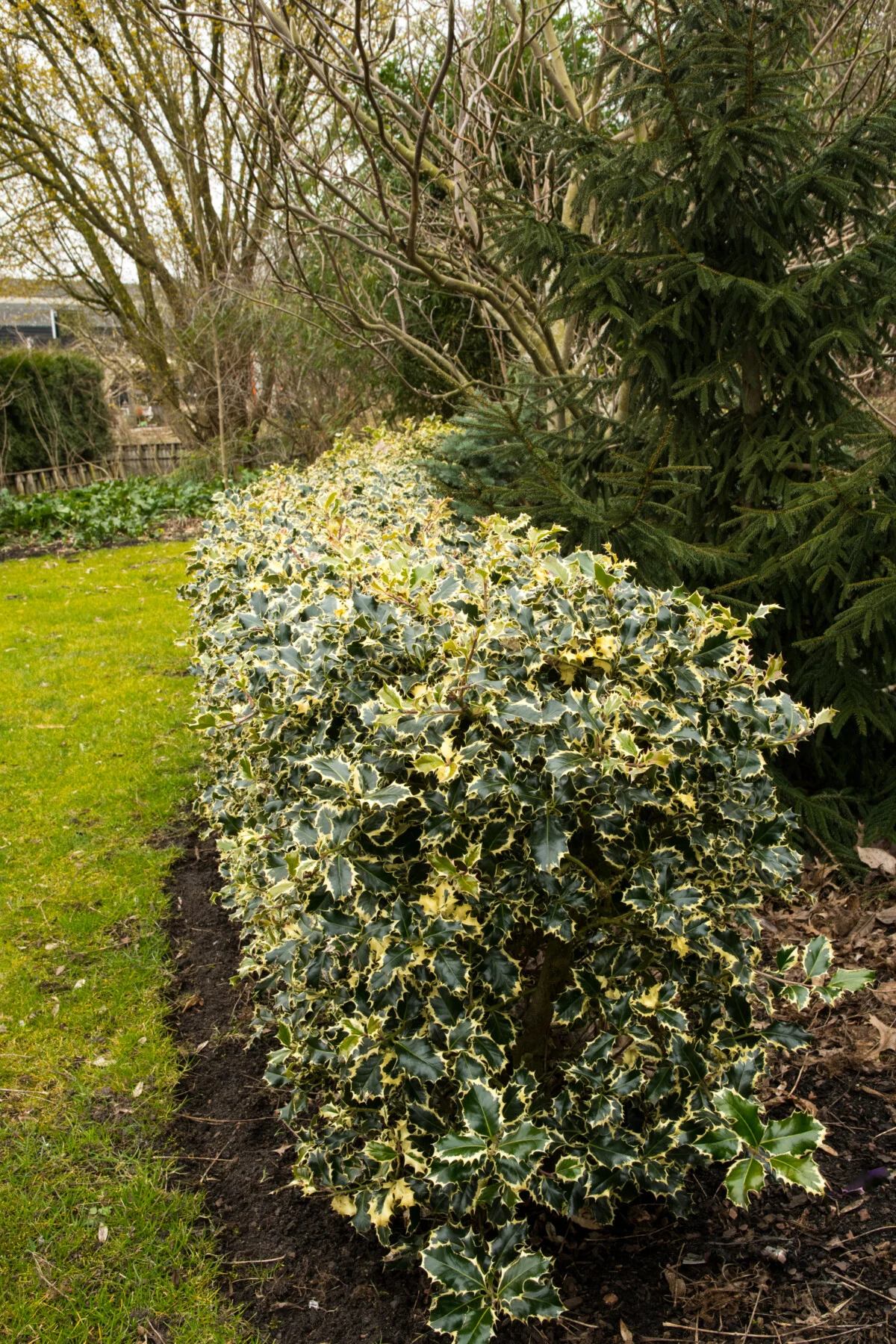
A Holly for Every Zone
If you want to plant a holly bush but wonder if it will grow in your USDA Hardiness Zone, you’re in luck. Holly will grow anywhere in the States. In fact, it grows nearly everywhere worldwide. There are few climates where holly will not thrive. Oddly enough, Santa doesn’t have any growing at the North Pole.
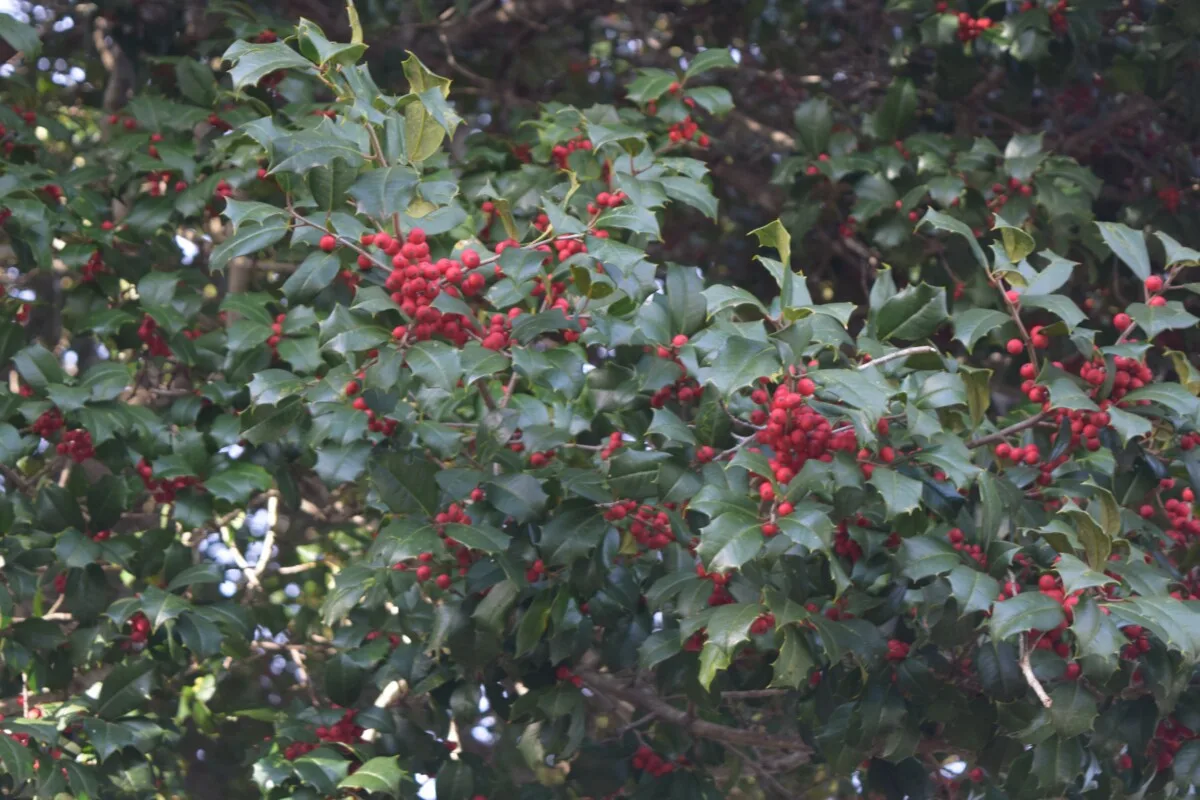
If you live in the southern states, especially near the coast, American holly, Ilex opaca, is a good option. For those in colder regions, European holly, Ilex aquifolium, will happily grow. However, the European variety is considered invasive on the North Pacific coast.
Check with your local gardening center, and you’ll easily find a holly or two that will happily grow in your region. Depending on the variety you choose and how you care for it, your holly bush will eventually become a holly tree. Some varieties can reach up to 50’ tall.
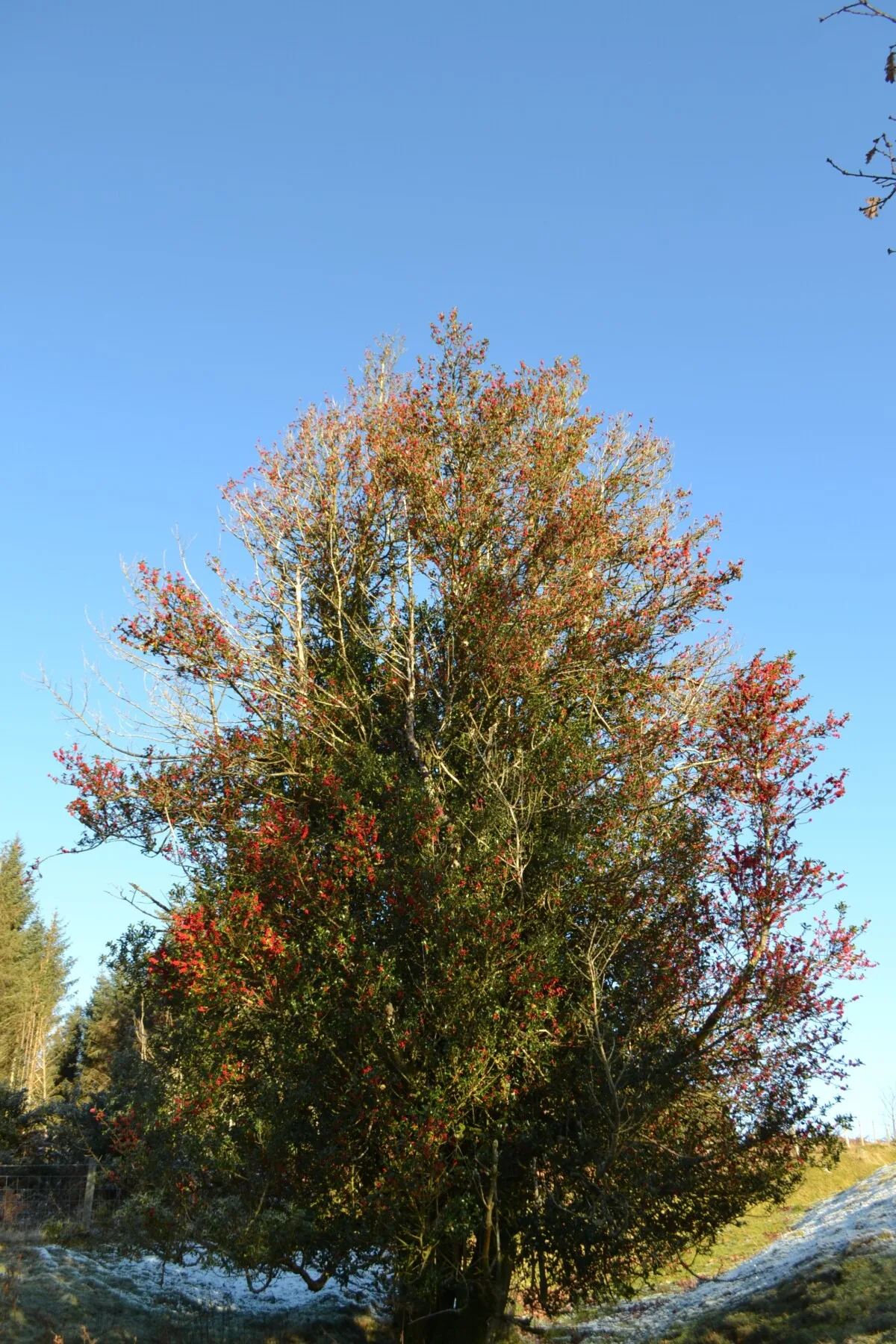
But if you’re going to grow one that tall, you’d better be in it for the long haul; it’s bad luck to cut down a holly tree.
Holly is One of Many Stolen Traditions
To those who wish to “Keep Christ in Christmas,” your wish has echoes from the past. It was the goal of the original Christian church. Sort of.
When the Roman church tried to convert the pagan peoples, they found it almost impossible to convince them to give up their spiritual practices and worship of natural deities and to convert them to Christianity.
Rather than admit defeat, the church renamed many pagan traditions and worship practices centering around the Winter Solstice (and all other pagan holidays) as Saint’s Days and incorporated them into the church calendar. This made for a much tidier and more convincing “conversion.”
It would be more accurate to say that the pagans converted Christianity to paganism.
Few, if any, of our most popular Christmas traditions today have roots in Christianity. The Christmas tree, decorating with holly or tying it to packages, caroling, kissing under the mistletoe, Santa Claus, Christmas stockings, giving gifts, and celebrating Christmas on December 25th are all Germanic, Greek or Celtic pagan practices.
Beautiful Berries for Your Favorite Birds
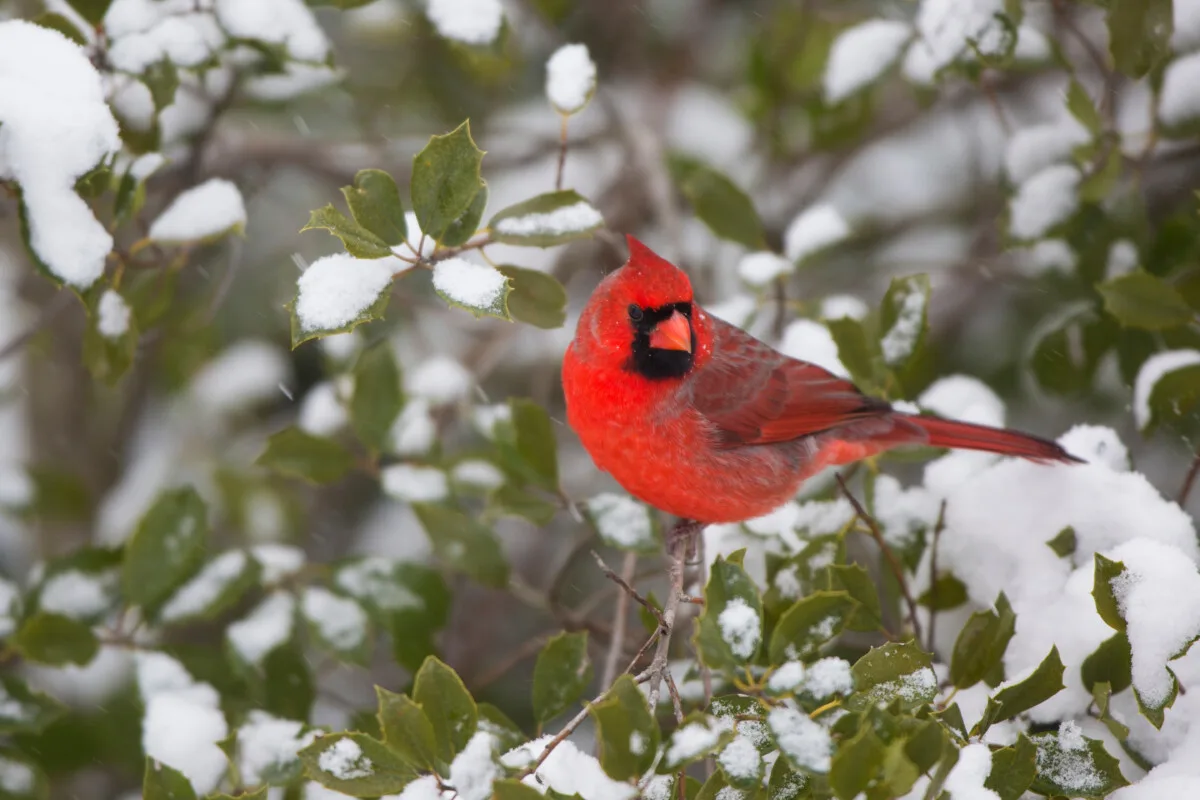
Did you know that holly berries are an important food source for birds in the winter? Long after other fresh berries and seeds have disappeared, holly berries linger, providing feathered friends with a much-needed late-winter food source.
What’s interesting is that the berries are inedible by the birds in the other months of the year. The berries are much too hard for them to eat. Only after a few successive frosts do the berries soften enough for birds to eat them.
Nature is pretty cool that way.
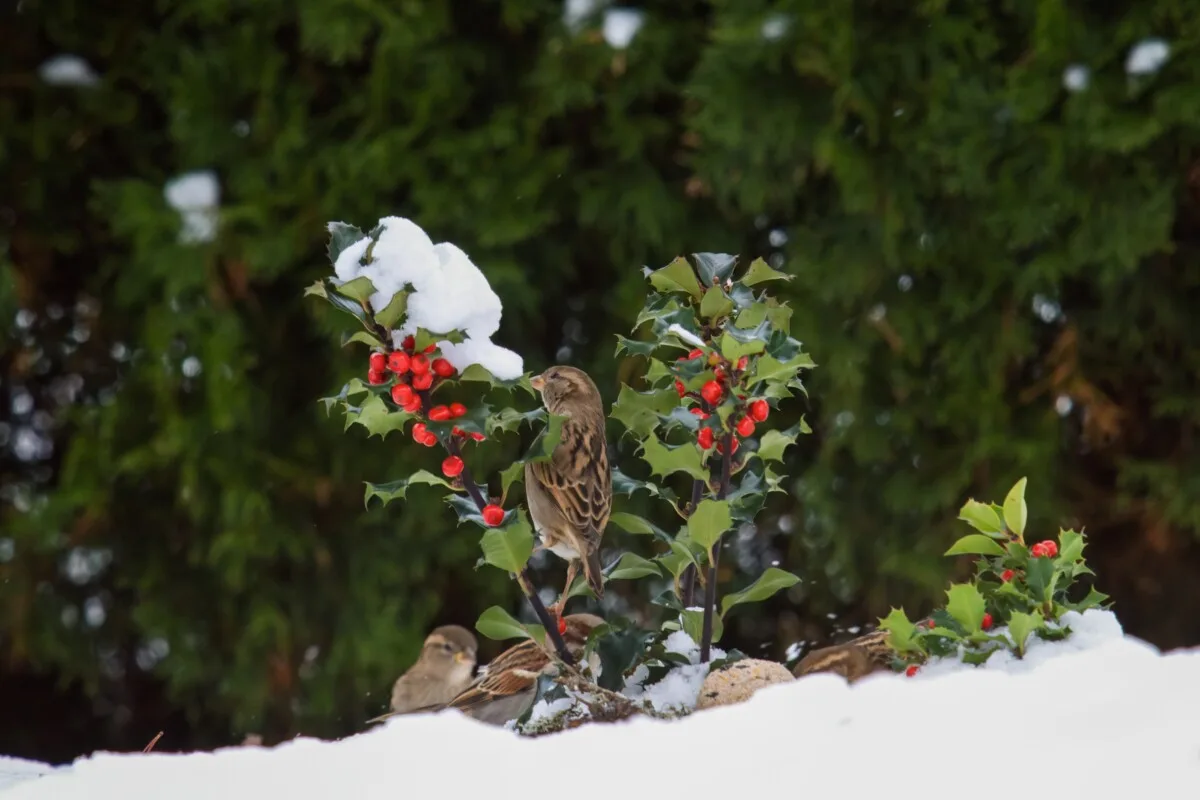
If you’re an avid birder, consider adding a holly bush to your landscape for excellent bird watching in the middle of winter. Of course, if you get some deer nibbling on your holly, don’t worry; we already know that plant will take care of itself. There will still be plenty of berries left for the birds.
A special note: while the birds may enjoy holly berries, they are poisonous to pets and people alike. So, if you do use fresh-cut holly to decorate your home at Christmas, keep them out of reach of the smaller people in your home.
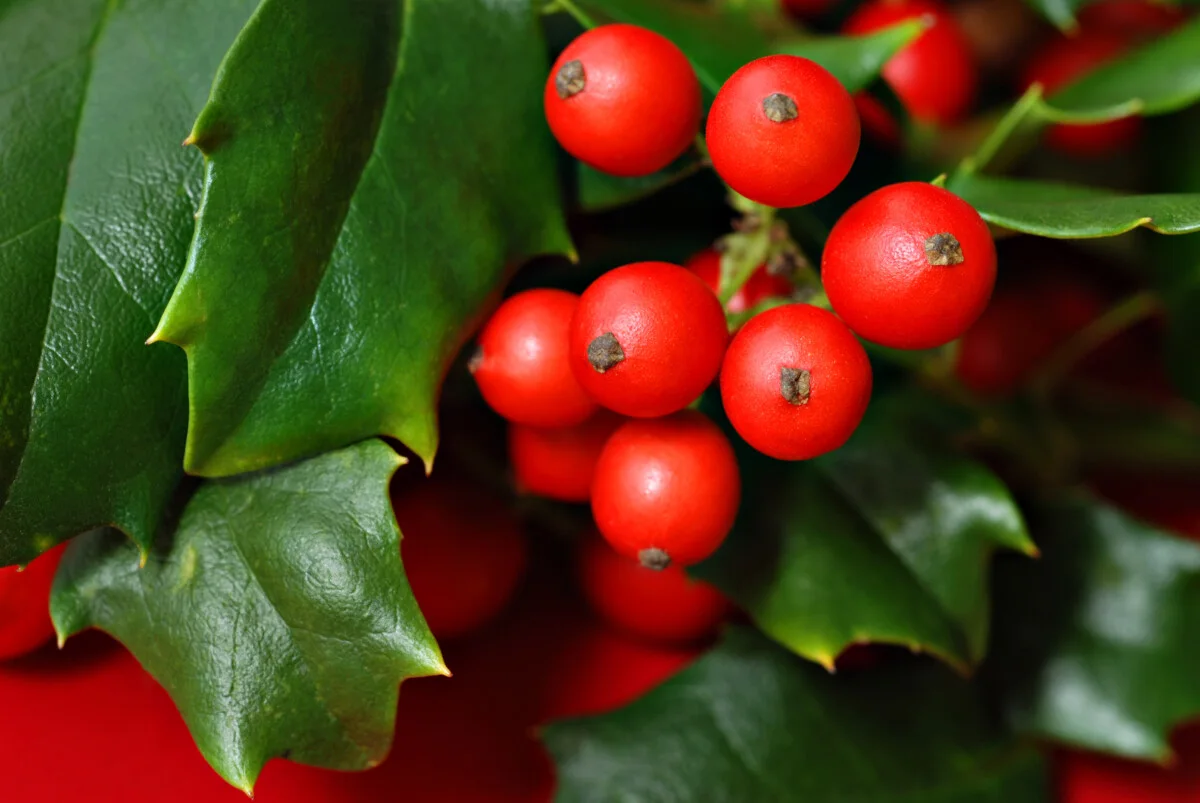
Holly truly is a unique plant with so many interesting characteristics that set it apart. It’s no wonder there is so much lore and tradition surrounding this beautiful plant!

Get the famous Rural Sprout newsletter delivered to your inbox.
Including Sunday ramblings from our editor, Tracey, as well as “What’s Up Wednesday” our roundup of what’s in season and new article updates and alerts.


